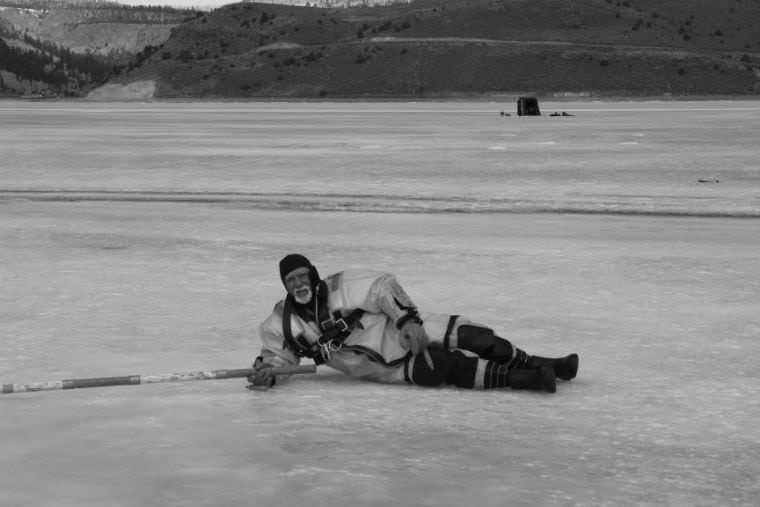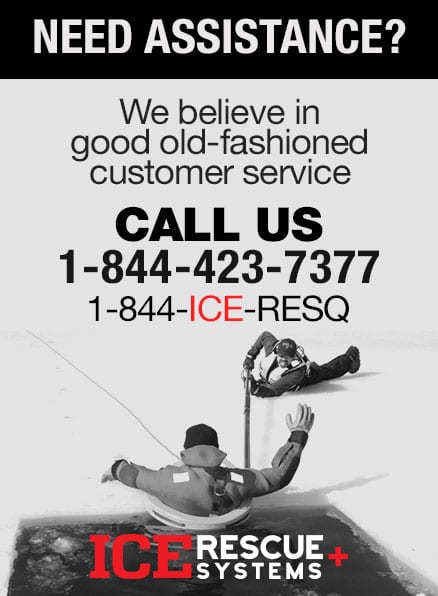Surface ice rescue is a rescue in static water that usually begins with a pet or a person going out onto a lake or pond where the condition of the ice is not safe and they fall through. They are unable to self-rescue and public safety personnel are called to help rescue them.
Every public safety organization has an idea about what constitutes an actual surface ice rescue. Some would say that any water containing ice, where a rescue occurs will put the rescue in the category of a surface ice rescue. Surface ice rescue professional trainers believe that an ice rescue is only a surface ice rescue when it occurs in static water with less than a one knot current, any current above that makes it a swift water rescue. It is important to know the difference when executing a rescue in these opposing situations, as the equipment used in these situations varies and in most instances should not be interchangeable. Take for instance, a typical ice rescue suit; these suits should never be used in a swift water rescue. “Why you might ask,” Let me explain, these suits do not have a neck seal and are prone to flooding, or filling with water in a current. You can, however use a dry suit with a PFD (personal floatation device) in both swift water and surface ice rescue situations. It is vital, from a safety perspective to know the limitations of your equipment and to use the proper personal protective gear for each rescue scenarios to prevent accidents. When executing an ice rescue, as the technician, you will be suited with a harness and firmly tethered to the shore; your tether lines will be managed by a tender who is qualified in an operations level of certification for ice rescue. In swift water, as the technician you will be equipped with a PFD that has a live bait escape belt on it (also known as the cow tail). This live bait system allows you to take yourself off of the tether if you get into a situation where you or your victim may be endangered. In an ice rescue you never cut yourself off of your safety/lifeline, in swift water you may have to, so it is important to have this option made possible by being properly suited and equipped for the rescue. As a rescuer and to ensure your safety, it is a matter of life safety to be trained by a qualified knowledgeable training agency that puts your safety first. It is imperative to know what constitutes an ice rescue and to be properly trained for each and every incident. A rescue technician should always have the proper equipment for the rescue he is asked to perform. The rescuer should never feel pressured to “go “if he feels he is not up to it, or he is not properly trained, doesn’t have the proper equipment for the conditions, or he doesn’t feel safe in the situation.


